Types of Mini Quad Frames
A mini quad frame is the foundation and most critical component of any mini quadcopter. It serves as the skeletal structure that holds all components together, determining the drone's durability, weight distribution, and flight characteristics. Let's explore the main types available on the market:
Toothpick Frames
These newer, increasingly popular frames earned their name from their remarkably thin and small profile. Designed primarily for high-speed and agile flying, toothpick frames typically feature:
- Ultralight carbon fiber or plastic construction
- Minimalist design approach
- Excellent power-to-weight ratio
- Perfect for indoor flying and tight spaces
Ideal for: Speed enthusiasts and pilots who prioritize agility
Micro Quad Frames
The most common type of mini quad frames, micro frames are designed for smaller-sized quadcopters. They offer an excellent balance of performance characteristics:
- Lightweight yet robust construction
- Typically range from 90mm to 150mm
- Versatile for various flying styles
- Great entry point for beginners
Ideal for: All-round pilots looking for balance between performance and durability
Long Range Frames
Built specifically to maximize flight distance and endurance, these frames feature:
- Larger overall dimensions
- Accommodations for bigger battery capacity
- More stable flight characteristics
- Often include mounts for auxiliary equipment
Ideal for: Aerial photography, surveying, and long-distance exploration
Freestyle Frames
Designed for acrobatic maneuvers and dynamic flying styles, freestyle frames offer:
- Reinforced arms and connection points
- Balanced weight distribution
- Protective design elements
- Optimized for tricks and flips
Ideal for: Acrobatic flying, racing, and advanced maneuvers
Speed Potential
Toothpick
Durability
Freestyle
Flight Time
Long Range
Versatility
Micro
Expert Tip: When selecting a frame type, consider not just your current skill level but also how you plan to progress. Many pilots find themselves upgrading frames as their skills and interests evolve.
Specifications and Features of Mini Quad Frames
Understanding the technical specifications of mini quad frames is essential for making informed purchasing decisions. Here's a comprehensive breakdown of the key specifications to consider:
Material
Mini quad frames utilize various materials, each with distinct properties:
- Carbon Fiber: Premium option offering exceptional strength-to-weight ratio, vibration dampening, and durability
- Aluminum Alloys: Affordable with good strength, easier to repair but heavier than carbon fiber
- Steel: Extremely durable but significantly heavier, limiting flight performance
Weight
Frame weight dramatically impacts flight characteristics:
- Lightweight (200-300g): Offers better agility, acceleration, and battery efficiency
- Medium (300-400g): Balanced performance with improved stability
- Heavy (400-500g): Maximum durability but reduces speed and flight time
Note: Lower weight improves performance but may compromise durability
Size
Frame size is measured by the diagonal motor-to-motor distance:
- 90-150mm: Ultra-micro frames, best for indoor flying
- 150-200mm: Micro frames, balancing agility and stability
- 200-250mm: Standard size, versatile for most applications
Tip: Larger frames can accommodate bigger components like cameras and batteries
Design Configuration
Frame design affects handling and performance:
- X Configuration: Most common, offering balanced flight characteristics
- H Configuration: Optimized for racing with better forward aerodynamics
- Plus Configuration: Simplified control orientation
- V-Tail Configuration: Reduced drag for increased speed
Motor Mounts
Located at the frame corners, motor mounts must match your motor specifications:
- 5-9mm: For smaller micro motors
- 9-12mm: Standard size for most mini quads
- 12-16mm: For larger, more powerful motors
Critical: Motor mount size must match motor diameter for secure attachment
Camera Mounts
Front-mounted brackets for FPV or recording cameras:
- 30-35mm: For micro cameras
- 35-45mm: Standard FPV camera size
- 45-50mm: For larger HD recording cameras
Consideration: Adjustable camera angles enhance flying versatility
| Frame Type | Weight Range | Size Range | Best Material | Ideal Use Case |
|---|---|---|---|---|
| Toothpick | 200-250g | 90-120mm | Carbon Fiber/Plastic | Indoor racing, agility flying |
| Micro | 250-350g | 120-180mm | Carbon Fiber | All-purpose flying, beginners |
| Freestyle | 300-400g | 180-220mm | Carbon Fiber | Stunts, tricks, acrobatics |
| Long Range | 350-500g | 220-250mm | Carbon Fiber/Aluminum | Photography, extended flights |
Mini Quad Frame Maintenance
Proper maintenance is crucial for extending the lifespan of mini quad frames and ensuring optimal performance and safety. Follow these essential maintenance practices:
Regular Inspection
Thoroughly examine your frame before and after each flight session:
- Check for hairline cracks in carbon fiber
- Look for bent or damaged arms
- Inspect mounting points for signs of stress
- Verify all standoffs are intact and secure
Safety Tip: Never fly with a frame that shows structural damage, as it could fail mid-flight
Regular Cleaning
Keeping your frame clean prevents performance issues and makes inspections more effective:
- Use a soft brush to remove dust and debris
- Clean with isopropyl alcohol for stubborn dirt
- Pay special attention to motor mounting areas
- Check for and remove any debris trapped between frame plates
Pro Tip: Compressed air cans are excellent for reaching tight spots without disassembly
Hardware Maintenance
Vibration from motors can gradually loosen hardware:
- Check and tighten all screws and bolts regularly
- Apply thread locker (blue, medium strength) to prevent loosening
- Replace any hardware showing signs of stripping or damage
- Maintain consistent torque on all frame screws
Caution: Over-tightening carbon fiber frames can cause stress fractures
Part Replacement
Damaged components should be replaced promptly:
- Keep spare arms, standoffs, and hardware on hand
- Replace components at the first sign of damage
- Follow manufacturer guidelines for replacement procedures
- Consider upgrades when replacing parts for improved performance
Lubrication
While the frame itself rarely needs lubrication, moving parts benefit from it:
- Apply lightweight silicone oil to motor bearings
- Use specialized lubricants for any hinges or folding mechanisms
- Avoid over-lubrication which can attract dirt
Important Warning: Always disconnect batteries before performing any maintenance on your mini quad frame. This prevents accidental motor activation which could cause serious injury during maintenance procedures.
Maintenance Schedule Recommendation: Create a regular maintenance schedule based on your flying frequency. Casual weekend flyers should perform thorough maintenance monthly, while competitive racers should check frames after every flight session.
How to Choose Mini Quad Frames
Selecting the right mini quad frame is crucial for achieving your desired flying experience. Here's a comprehensive guide to making an informed decision:
Material Considerations
Carbon Fiber
Pros: Extremely lightweight, high strength-to-weight ratio, vibration damping
Cons: Higher cost, can shatter on impact, difficult repairs
Overall Performance
Plastic
Pros: Affordable, flexible on impact, beginner-friendly
Cons: Less durable, flexes during flight, shorter lifespan
Overall Performance
Aluminum
Pros: Good durability, moderate cost, easier repairs
Cons: Heavier than carbon fiber, can bend permanently
Overall Performance
Size Selection Factors
The size of your mini quad frame should align with your flying goals:
| Size Range | Flying Style | Advantages | Limitations |
|---|---|---|---|
| 90-150mm | Indoor racing, tight spaces | Extremely agile, portable | Limited battery capacity, shorter flight times |
| 150-200mm | Mixed-use, freestyle | Good balance of agility and stability | Moderate payload capacity |
| 200-250mm | Racing, photography | Higher payload capacity, stable flight | Less nimble in tight spaces |
Weight Considerations
Frame weight impacts several performance aspects:
- Lightweight Frames (200-300g):
- Superior agility and acceleration
- Extended flight times with the same battery
- Better indoor performance
- Reduced crash durability
- Heavier Frames (350-500g):
- Enhanced stability in windy conditions
- Greater payload capacity for cameras and equipment
- Better durability in crashes
- Reduced flight time and responsiveness
Decision Framework: When selecting your frame, prioritize your requirements in this order:
- Intended use (racing, freestyle, photography)
- Your experience level and flying style
- Budget constraints
- Environmental conditions (indoor vs. outdoor, wind exposure)
This framework will help narrow down your options to frames that best match your specific needs.
DIY and Replacement Guide for Mini Quad Frames
Whether you're building your first mini quadcopter or replacing a damaged frame, this step-by-step guide will help you through the process efficiently and safely.
Tools and Materials Needed
| Essential Tools | Optional Tools | Materials |
|---|---|---|
|
|
|
Step-by-Step Assembly/Replacement Process
Safety Preparation
Before beginning any work:
- Remove propellers for safety
- Disconnect and remove all batteries
- Work in a well-lit, static-free environment
- Organize small parts in labeled containers
Disassembling the Existing Frame
For replacement projects, carefully disassemble your current setup:
- Document your wiring configuration with photos
- Label wires before disconnecting
- Remove flight controller and electronics carefully
- Detach motors last, noting their positions and orientation
Pro Tip: Take photos at each step to reference during reassembly
Preparing the New Frame
Before transferring components:
- Inspect the new frame for any manufacturing defects
- Install standoffs in the appropriate positions
- Remove any protective film from carbon fiber parts
- File down any sharp edges that could damage wiring
Component Transfer and Installation
Transfer components in this recommended order:
- Mount motors first, applying thread locker to screws
- Install power distribution board (PDB)
- Mount flight controller, orienting it correctly
- Install receiver, VTX, and camera
- Route and secure wiring neatly
Caution: Ensure correct motor direction and wiring polarity
Wiring and Connections
Proper wiring is critical for reliability:
- Follow manufacturer diagrams for ESC connections
- Use heat shrink tubing on all solder joints
- Secure wires away from moving parts
- Double-check polarity before powering up
- Use conformal coating on electronics for moisture protection (optional)
Final Assembly and Testing
Complete the build with thorough verification:
- Check all connections visually before powering on
- Perform motor direction test without propellers
- Verify all control inputs function correctly
- Install propellers only after all tests pass
- Perform initial hover test in a safe, open area
Important Safety Warning: Never perform a motor test with propellers installed. Even at low power, spinning propellers can cause serious injury. Always remove propellers during bench testing and configuration.
DIY Success Tip: Take your time, especially during your first build. Rushing often leads to mistakes that are difficult to troubleshoot later. A methodical approach will result in a more reliable quadcopter and a more satisfying building experience.
Frequently Asked Questions
Mini quad frames are the structural foundation of mini quadcopters, providing the essential chassis that holds all components together. They serve multiple critical functions:
- Supporting motors, flight controllers, batteries, and other electronics
- Determining the quadcopter's weight distribution and center of gravity
- Providing mounting points for accessories like cameras and antennas
- Absorbing impact during crashes to protect expensive internal components
The frame design significantly influences flight characteristics, durability, and overall performance of the quadcopter.
Mini quad frames utilize various materials, each offering different benefits:
- Carbon Fiber: Premium choice offering exceptional strength-to-weight ratio. It's rigid, lightweight, and dampens vibrations well. Most high-performance frames use 3mm-4mm carbon fiber plates.
- Fiberglass: Less common but offers good RF transparency for better radio signal transmission.
- Engineering Plastics: Used in beginner-friendly frames, offering flexibility during crashes but less rigidity during flight.
- Aluminum: Provides good durability and is easier to work with than carbon fiber, but adds weight that affects flight performance.
Professional and competitive pilots typically prefer carbon fiber for its superior performance characteristics despite its higher cost.
Frame design significantly influences multiple performance aspects:
- Weight: Lighter frames allow faster acceleration, better battery efficiency, and more agile flight
- Rigidity: Stiffer frames transfer motor power more efficiently and provide better handling
- Design: Different configurations (X, H, etc.) affect aerodynamics and handling characteristics
- Size: Smaller frames are more nimble while larger frames offer more stability
- Weight Distribution: Balanced frames provide more predictable flight behavior
Many experienced pilots believe the frame is the most important component decision, as it determines the quadcopter's flight "personality" and cannot be easily changed later.
Key considerations for frame selection include:
- Intended Use: Racing frames prioritize speed, freestyle frames favor agility and durability, photography frames focus on stability
- Skill Level: Beginners benefit from more durable designs while experts may prioritize performance
- Component Compatibility: Ensure the frame accommodates your desired motors, flight controller, and other electronics
- Battery Capacity: Consider whether the frame can fit your preferred battery size
- Camera Mounting: Different frames offer various camera mounting options for FPV and HD recording
- Budget: Balance cost against features and quality
Take time to research and read reviews from experienced pilots before making your final decision.
Most mini quad frames are designed with compatibility in mind, but important considerations include:
- Motor Mounting: Verify the frame's motor mount pattern matches your motors (typically 16×16mm, 19×19mm, or 30.5×30.5mm)
- Flight Controller Mounting: Most frames accommodate standard 30.5×30.5mm mounting, but some micro frames require 20×20mm boards
- Stack Height: Ensure the frame provides sufficient clearance for your electronics stack
- Battery Size: Check that your preferred battery dimensions fit within the frame's designated area
- Camera Compatibility: Some frames work better with specific camera form factors
Many manufacturers provide compatibility guides for their frames, and standardization has improved in recent years. When in doubt, consult the frame's specifications or ask in community forums before purchasing components.
































































































































































































































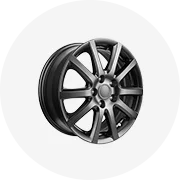
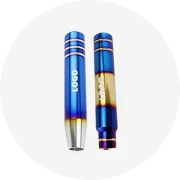
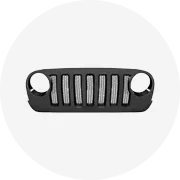
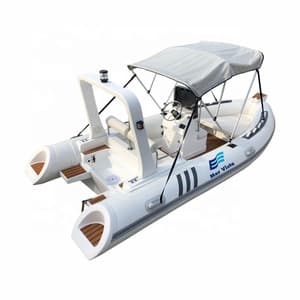
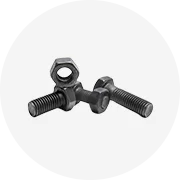
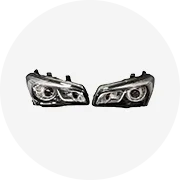
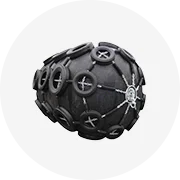
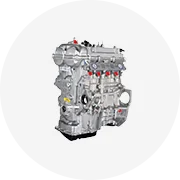
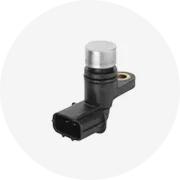
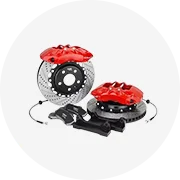
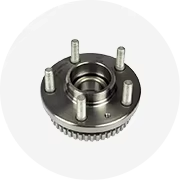
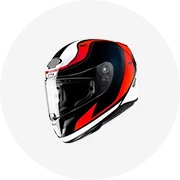
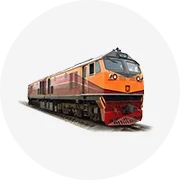
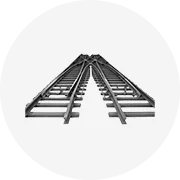
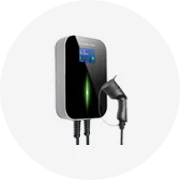
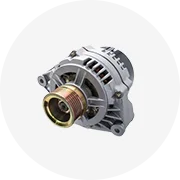






 浙公网安备 33010002000092号
浙公网安备 33010002000092号 浙B2-20120091-4
浙B2-20120091-4